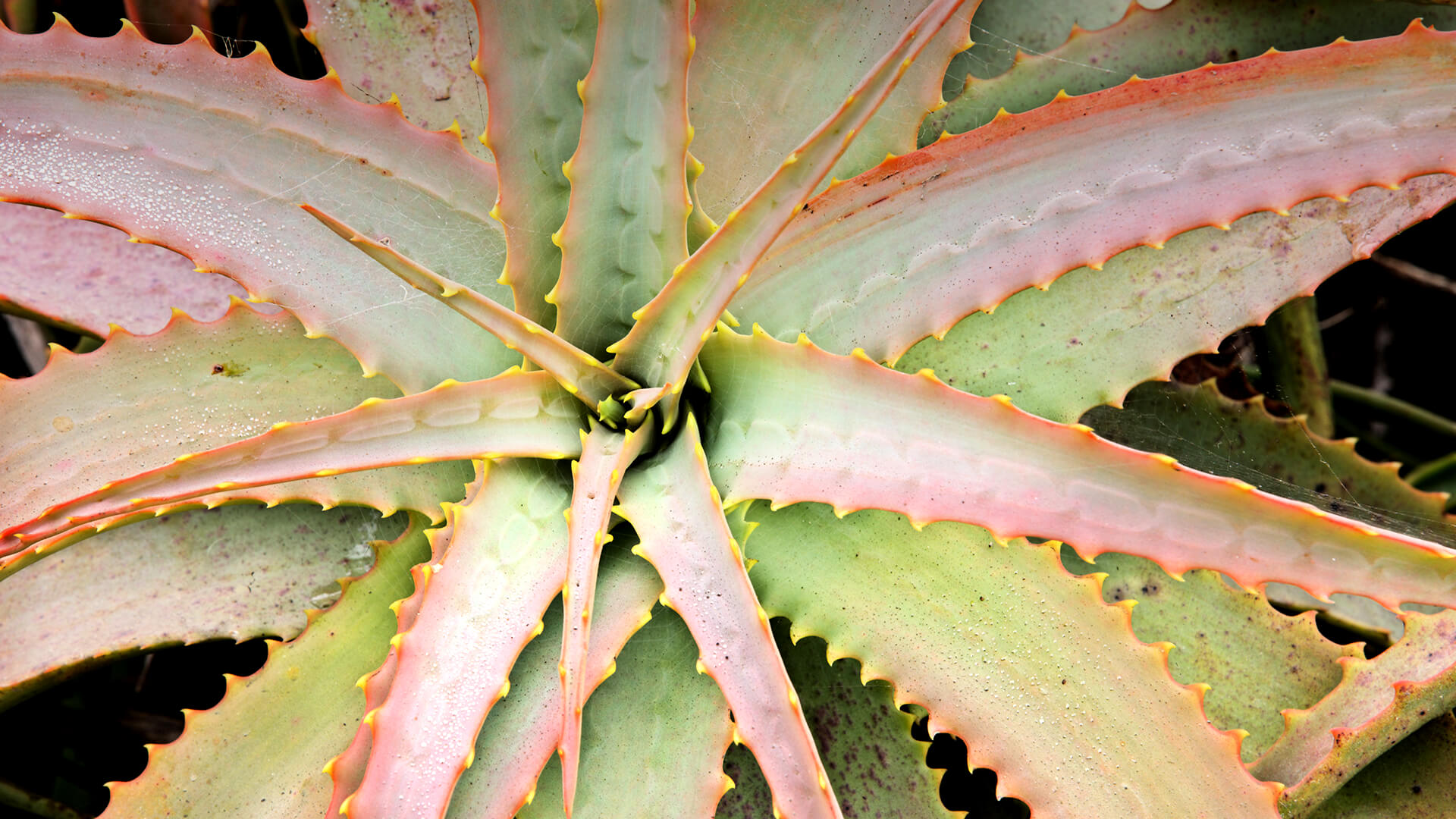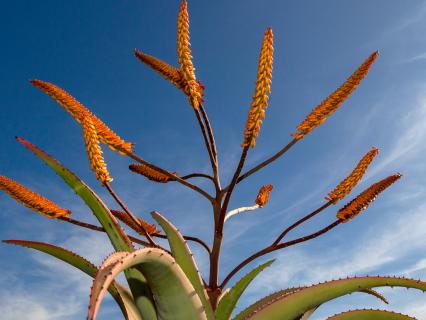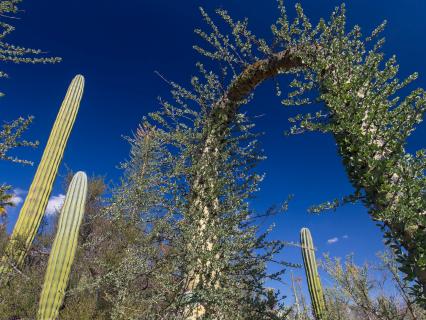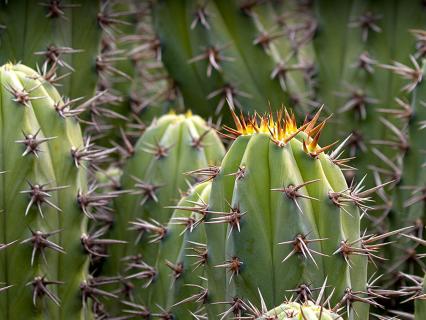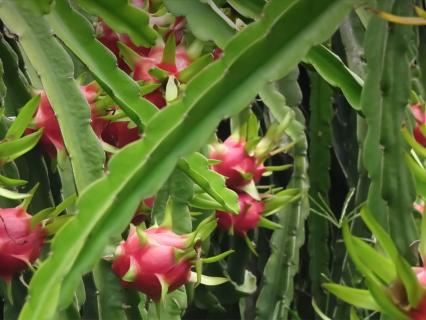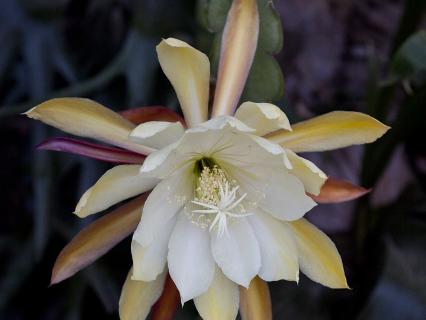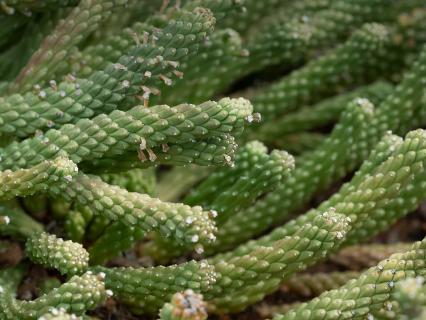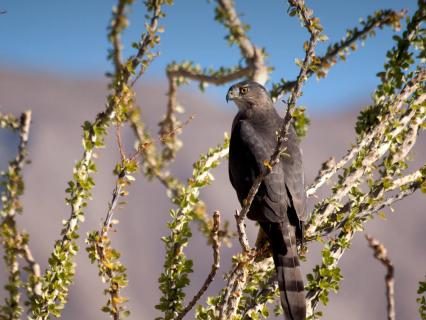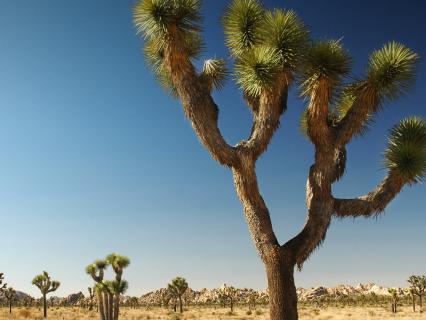Cactuses and Succulents

DEFINING CHARACTERISTICS:
Thick, fleshy stems, leaves, or both
Don't wilt, but remain plump even when the plant reaches very high internal temperatures
Drought resistant—adapted to survive with very little water
Specialized water-storage tissues in the leaves or stems
Often, other water-conserving adaptations in addition to water storage

The term "succulent" is awarded to a plant based on what it does, not who its relatives are. Unlike plant groups named for their common evolution (such as grasses, roses, palms, orchids, or ferns), a succulent can be any plant—from any scientific family—that stores water in thick, fleshy tissues. In fact, the word "succulent" comes from the Latin word succulentus, which means "juicy."
The fleshy leaf or stem of a succulent does more than just store water. Its rounded shape also reduces the surface area of the structure in comparison to its volume. A low surface-to-volume ratio minimizes water loss and helps a plant keep cool.
HABITAT—HOW DRY I AM
Many succulents thrive in desert habitats that are far too hot and dry for other plants. In some places, rain may fall just once or twice a year, and during drought, a plant may go two years or more without a shower—and survive! Many succulents have shallow roots that spread like a wide net around the plant, to make the most of even small amounts of rain.
Other adaptations help a succulent conserve water, too. A thick, waxy layer called the cuticle provides a barrier that protects the soft, water-storage tissue inside. And for some, hairs or spines help shade leaves or stems from the sun and insulate the plant from some of the effects of drying winds.
NIGHT SHIFT
To photosynthesize, plants need sunshine—and carbon dioxide (CO2), which they take from the air through tiny pores—called stomata—in their leaves. But while open stomata bring carbon dioxide in, they also let water vapor out. So, when they sun's not shining, stomata close to conserve water.
Many succulents protect themselves further from water loss by working in the relative coolness of night; stomata open at night to take in CO2, and close during the hot, dry daytime, to conserve water loss. This requires a special adaption, though, because photosynthesis requires sunshine. These succulents have a way to rearrange CO2 molecules and store them overnight. When the sun comes up, the stomata snap shut, and the photosynthesis-engine starts, powered by the stored CO2.
VARIETY
Succulents can take many forms. Some are compact, low-growing ground covers (think of stonecrops); others are giant and tree-like (think of saguaros or cardón cactus); and others look like vines (think of the string of pearls Senecio rowleyanus). Still others, known as mistletoe cactus, grow as epiphytes.
Cactuses may be the best-known succulents, but you can probably think of others. Popular ornamental plants like jade plants, hen-and-chicks, aloes, and agaves are all succulents.
CONSERVATION
Many succulents are in danger of extinction. For some, habitat loss plays a role, but there's another threat that's alarming: illegal collection for the ornamental horticulture trade. The demand for drought-tolerant plants increases as homeowners try to reduce water usage. And because so many succulents are unique (some might even say bizarre) and interesting, they make good specimen plants that are standouts in a home garden or on a sunny windowsill. Of course, most of the succulents you'll see in your garden store are nursery-propagated, but unscrupulous dealers all over the world still collect plants illegally.
Another looming threat is global climate change. How will projected weather changes such as rising temperatures, drought, or flooding affect these specialized plants that cling to life in places other plants can't survive?
By supporting San Diego Zoo Wildlife Alliance, you are our ally in saving and protecting wildlife worldwide.

